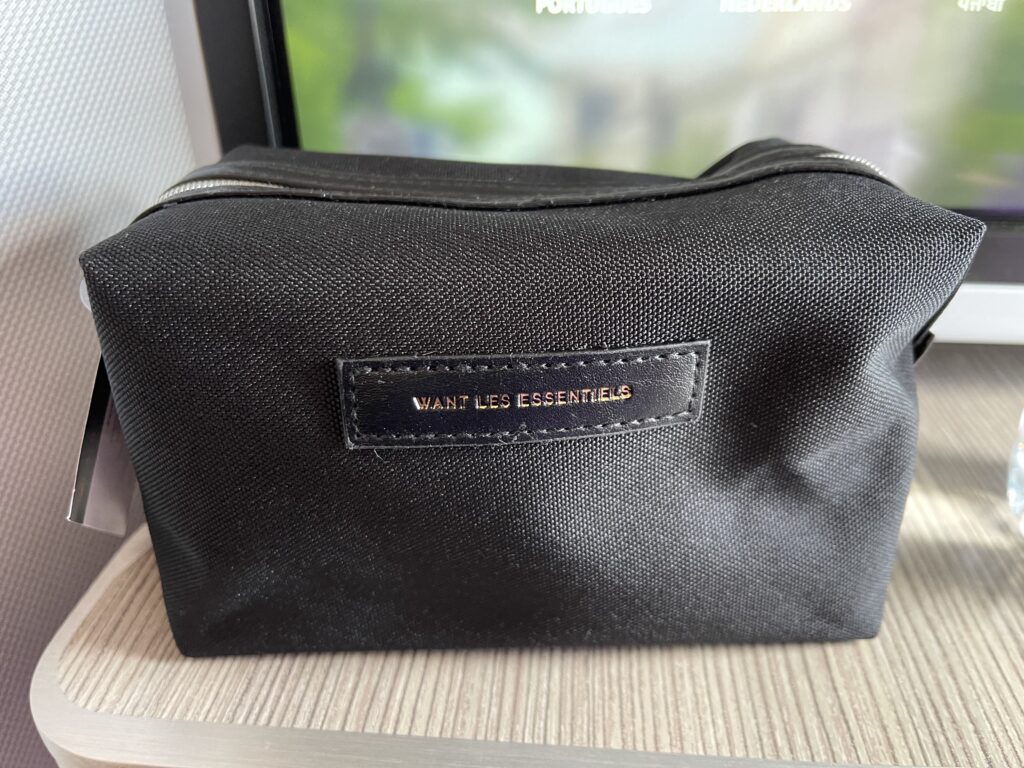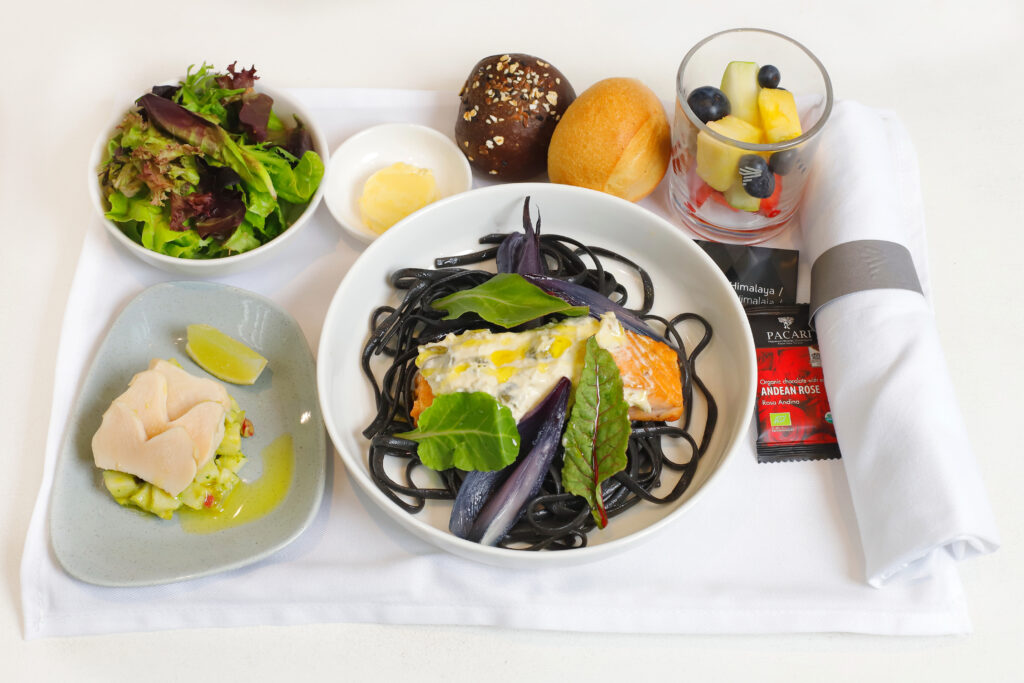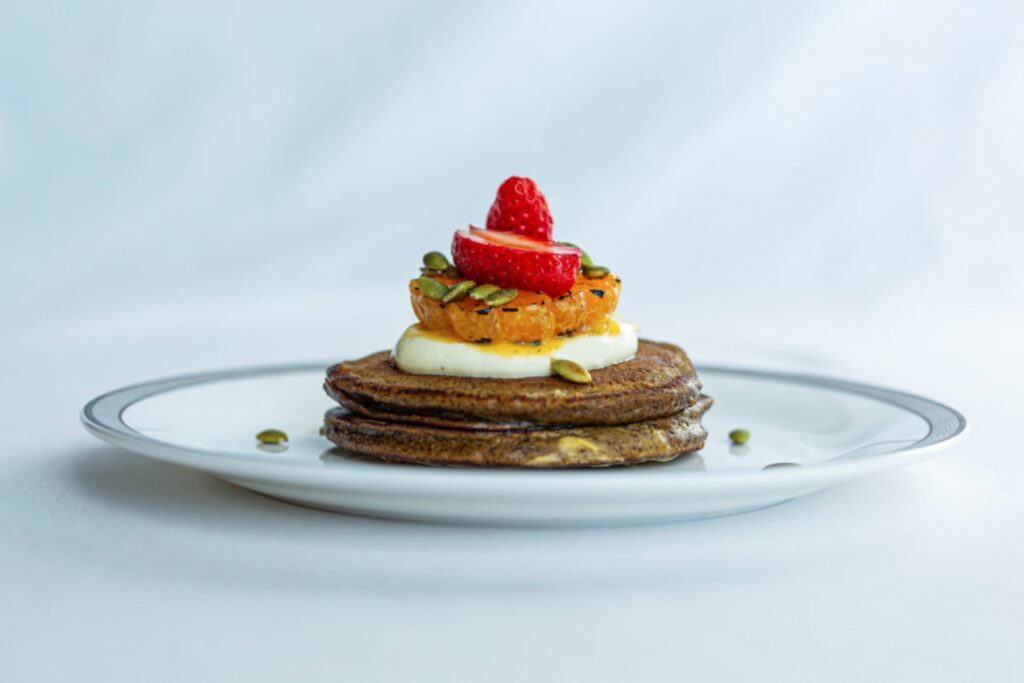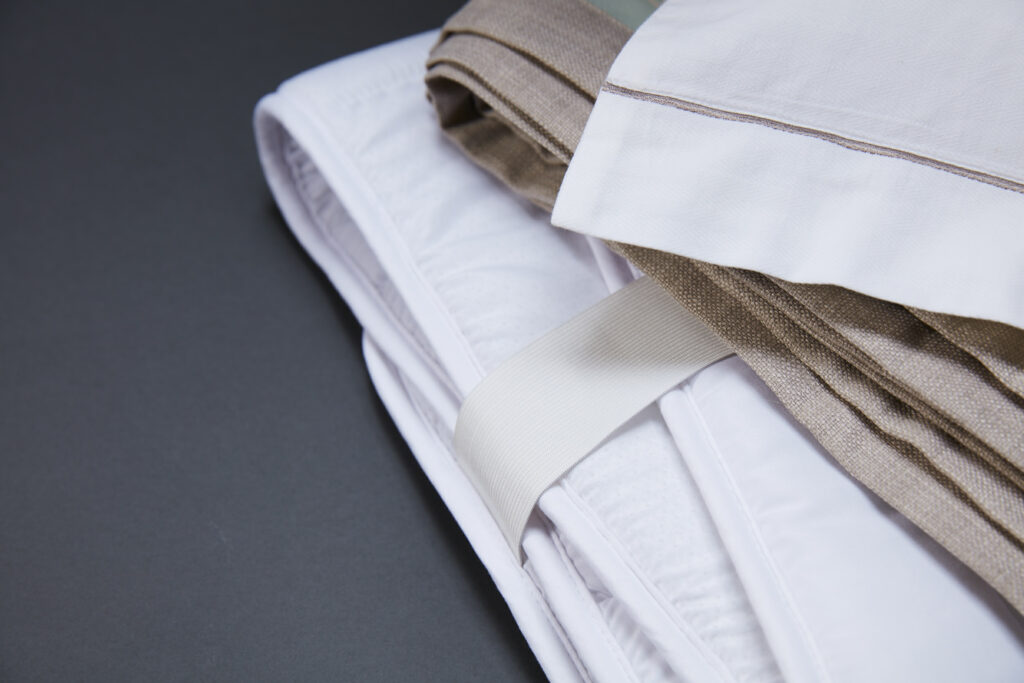 As the passenger experience industry prepares for the Aircraft Interiors Expo in Hamburg in early June, we’ve already looked at what makes a five-star business class seat in 2023. But that’s the hard product: what about the soft product, including dining, beverages, linens and the rest?
As the passenger experience industry prepares for the Aircraft Interiors Expo in Hamburg in early June, we’ve already looked at what makes a five-star business class seat in 2023. But that’s the hard product: what about the soft product, including dining, beverages, linens and the rest?
Let’s start where most passengers might: with food and drinks. Five-star business class food in 2023 is all about choice, starting with the choice of dining time. By all means provide a suggestion for first meal, but enough carriers manage to execute on-demand dining that it is now a top-tier must-have.
On to the menu, onboard selections must be substantially beyond “chicken, beef or pasta” in all cases, and must sound closer to fine dining than to an office canteen.
The easiest way to excite the most tastebuds is some form of book-the-cook meal pre-ordering service, offering the widest variety of selections that can also include special dietary requirements, personal preferences, growing trends like plant-based meals, and wellness-focussed food concepts. This also helps save onboard weight — and reduces space, waste and emissions. A win all-round.
A real five-star business class certainly no longer falls back on the boring option of a lump of meat poorly grilled and then reheated with a thin brown sauce tasting of the same meat. Swap out a lump of wet, steamed sirloin for a slow-cooked short rib, replace dry chicken breast with flavourful thigh, or opt for some of the juicier low-and-slow cuts like lamb shank or a comforting stew.
Indeed, while truly elevated dishes are certainly a positive, comfort food is an option, but this too should have a premium feel and a wow factor: something like a lobster macaroni and cheese or a truffle oil, for example, can go a long way towards making a meal or snack feel special.
Thoughtful, considered breakfasts are a real opportunity for an airline to give a premium feel to the experience. Options like a hearty waffle or pancakes rather than the default weaponised omelette are a big plus, but the entire package needs to be considered. All too often the breakfast service can be let down by the little things — cheap, artificial and off-brand yoghurt comes immediately to mind.
A great way to supplement a food offering is with an on-demand snack service, which can be used not only to add options for passengers at the main mealtimes, but also to provide choice for people on different time schedules or looking to adapt early to jetlag.
Fortunately for business class, single-use plastic was already something of a pariah up front, so continuing to provide metal flatware and premium dishware is relatively widespread. Keeping this looking fresh and up-to-date is, however, an ongoing challenge, especially given weight limitation requirements.
When it comes to drinks, perhaps the first thing that comes to mind in business class is a glass of Champagne — and it must be Champagne, at least as an option. By all means serve a Prosecco, Cava or similar, especially for sparkling cocktails, but the good stuff (at least a category 2 bottle and ideally a category 3 or 4) is still a five-star expectation.
Wines must be thoughtfully curated, aimed both to impress with its positioning and its performance altitude. Leaning towards new world blends rather than old world pricing is an excellent way to balance the books.
Showcasing national beverages is a charming way to bring in national brand equity: TAP Air Portugal’s delicious ginjinha sour cherry liqueur is a great example.
Cocktails, and especially thoughtful mocktails, can go a long way towards creating a premium experience. Indeed, non-alcoholic beverages of all sorts are often underserved: standouts here include Finnair’s blueberry juice, JAL’s Sky Time, and Lufthansa’s non-alcoholic beer, appreciated by Olympians and non-athletes alike.
All of this needs to be served in elegant, properly premium glassware. It can be anything from Finnair’s famous Iittala Ultima Thule glasses to something from Schott or Riedel, but the age of those odd little thimble-sized airline wine glasses is surely past. There’s a great opportunity for airlines with brand history to add a special touch: British Airways’ cut glass aesthetic tumblers are a great example.
Properly premium tea and coffee is also a must-have: more TWG than Twinings, and espresso-based drinks rather than instant or airplane-brewed coffee.
Plumping out the soft product is bedding, which doesn’t need to be cobranded with a luxury partner, although this can elevate a weaker airline brand. Mattress pads are a must-have, as are crisp linens — no static-generating polyester, thank you.
Airline pyjamas are always appreciated, and are almost up to the point of a must-have, especially if they are reuse-friendly. Making up for their lack with a strong amenity kit game is an option, though, but this must feel premium: ballistic nylon bags or pleather sacks with unbranded or airline-branded amenities are out, with textures pleasant to the touch a real plus.

To paraphrase Faye Dunaway as Joan Crawford, “no more black nylon amenity kits. Ever!” Image: John Walton
Delta does a great job with its Someone Somewhere pouches, but the take-what-you-need model for amenity kits deserves some more serious thought.
Altogether, any golden threads of design and identity that an airline can draw through their soft product always lifts the overall look and feel. Not every airline can be Singapore Airlines with its batik brand equity, but most airlines can join up the #PaxEx dots to create a consistent experience.
Related Articles:
- What does a five-star business class seat look like in 2023?
- Rethinking amenity kits: the take-what-you-need model
- TAP’s custom Portuguese #PaxEx elements offer a design masterclass
- Excellent crew and soft product gloss over blemishes on Virgin 787
Featured image credited to Finnair













